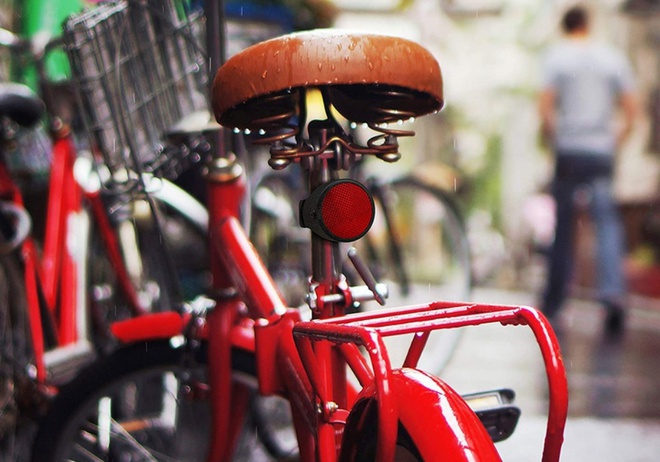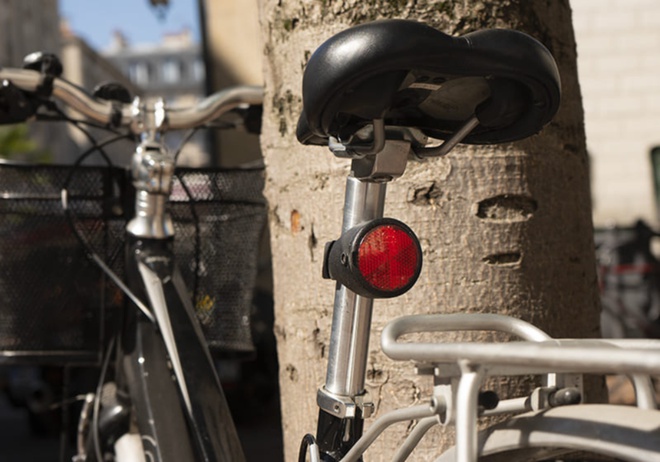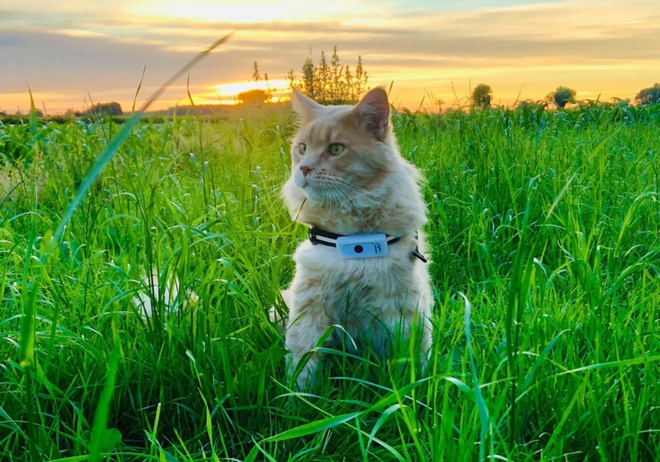GPS trackers for bikes
If you're looking for advice on how to choose the best GPS tracker for your bike, you've come to the right place. We're here to give you an overview of the different technologies (with no subscription) that are out there.

Reading time : 10 min
It's so frustrating to not find your bike where you left it, or worse, to just find the lock that you were sure was unbreakable. This is why a number of GPS tracker manufacturers have started selling GPS trackers for bikes with various mounting options, including adhesive backing, handlebar, bike frame installation or bike light integration.
For better anti-theft strategies, secure bike storage solutions, bike insurance, and serial number registration are also essential measures that complement tracker use. Remember, the best protection comes from a combination of smart GPS tracker placement, advanced technology, and careful record-keeping. Always keep proof of ownership and your tracker’s serial number in a safe place.
SUMMARY
A low-power GPS tracker: the best option for locating a bike

When it comes to finding your bike, the best option is to use a GPS tracker that works with low-power networks. Here's how this technology works, as well as its advantages and disadvantages.
Low-power GPS trackers for bikes: how do they work?
GPS trackers with no subscription are the best way to locate a bike, and they run on the Sigfox and Lora networks, which are also known as “low-power networks”. So what exactly are these networks?
Sigfox and Lora networks
Sigfox and Lora have driven the rise in the number of smart devices in the internet of things that now fill our everyday lives. The Sigfox and Lora networks, also known as “LPWANs” or “Low Power Wide Area Networks”, broke new ground with their simple promise: a much lower cost and lower battery consumption compared to conventional mobile networks.
These networks use public frequencies and don't require a licence. This reduced cost allows manufacturers of GPS trackers to sell GPS trackers with no subscription.
Low power GPS trackers for bikes
Low-power GPS trackers run on these new LPWAN networks. Manufacturers use these public frequencies to offer increasingly innovative GPS trackers at competitive prices.
The Invoxia “Bike Tracker” GPS tracker is the perfect example of this. It's priced very reasonably (around £150) with a subscription included for its first few years of use. It's small, discreet design makes it perfect for mounting on a bicycle. A different version using the same technology is available as a GPS tracker for cars.
The pros and cons of low-power trackers
The advantages
There are lots of advantages to low-power GPS trackers. First off, you need to know what you're going to use it for, which in this instance is finding your bike. This will influence which type of GPS tracker you need to buy. Low-power GPS trackers are the perfect choice for a number of reasons:
- They allow you to locate your bike over an unlimited distance: thanks to the extensive network of mobile phone masts all over the UK, your tracker can transmit its location from wherever it may be.
- They are very competitively priced: you can expect to pay around £150 for an Invoxia bike GPS tracker. You can find them cheaper on websites like Amazon, but the subscription is usually only included for the first years.
- You’ll have no subscription fee to pay thanks to the low-power network technology. This technology makes it the best choice for a bicycle GPS tracker.
- Long battery life lasting several months: no need to detach the device too often for recharging. Low-power networks keep their promise: much longer battery life than with conventional mobile networks.
- You get theft alerts: receive app alerts on your phone with the mobile app provided by the manufacturer. Many GPS trackers now offer geofencing, allowing you to define virtual boundaries and get notified if your bike leaves the area. We rate the Invoxia tracker as the best GPS tracker for bikes, but compact alternatives like AlterLock or Vodafone Curve also perform well.
In addition to these smart features, this type of mini GPS tracker is discreet, compact, waterproof, and specifically designed for two-wheelers. Some models include component integration for better concealment and can be hidden under a water bottle cage, inside a rear light, or within a bike bag, ideal for discreet GPS tracker placement and reducing the risk of tampering. Most come with a clear manufacturer manual, making installation and activation straightforward. Combined with the free app, these trackers offer a powerful and reliable solution for locating your bike if it’s ever stolen.
The drawbacks
No subscription low-power GPS trackers have a lot of advantages, but nothing is ever perfect. The biggest drawback of this type of device is that real-time tracking is just not possible. “Public frequency” is pretty much synonymous with “network saturation”. Messages sent by these trackers are almost always delayed, with your bike's location being updated with a few minutes delay each time (1 to 2 minutes on average).
Plus you only get a limited number of locations per day (again because of the public frequencies), so it's impossible to get a location every minute, for example, even without the lag in message transmission.
On the other hand, you don't necessarily need real-time tracking to locate a bike. If your bike is stolen, you're not going to try tracking the thief in real time as they cycle round town. You do need to know where the robber has taken your bike though so you can go and get it back or report it to the police. Whoever has taken your bike will eventually stop and stash it somewhere safe. So a location on request is enough in the event of theft.
Why is this the best option for your bike?
It has a lot of advantages that make it the best option. A low-power GPS tracker has everything you need to locate a bicycle. If your bike is stolen, this tracking device will make it easy to find. What's more, it's a subscription-free GPS tracker that delivers GPS positioning that is just as effective as other subscription-based technologies. What’s not to like?
A low-power GPS tracker is an autonomous product because it can transmit its position wherever it is using low-power networks. The fact that this product doesn't need a subscription, or at least the subscription is included for the first few years, is an important and very positive factor when buying this type of device. In addition to offering excellent location information, its affordable price is an added bonus for this option.
There are also GPS trackers with no subscription for cars and motorbikes. All these GPS trackers work on the same principle. They just come in different sizes to suit different types of vehicles.
Things to check before buying a GPS
18 questions you need to ask yourself before buying a GPS tracker for your loved ones!
Other no subscription options to locate your bike

There are obviously other options to locate your bike with no subscription. Read on to find out more.
The GPS tracker without SIM card
Lots of people think a GPS tracker without SIM card is a GPS tracker with no subscription. That's not necessarily true. This is actually used to describe two different types of products:
- GPS trackers connected to low-power networks as explained above. In our opinion, this is the best option for locating a bike.
- Then there's GPS trackers connected to conventional mobile networks (2G, 3G, 4G), which aren't actually subscription free GPS trackers. These do need a SIM card to work, but the manufacturer doesn't supply one, hence the name “GPS tracker without SIM card”.
Read on to find out more about GPS trackers connected to conventional networks, also known as “GPS trackers without SIM card”.
The main idea of how a GPS tracker sold without a SIM card works
This type of tracker is sold by the manufacturer without a SIM card, but actually needs a SIM card to work. These trackers are connected to “conventional” networks, the very same ones you use for your smartphone. We use these conventional mobile networks every day to send and receive messages (2G), to surf the Internet (3G), or to access high-speed multimedia (4G) on our mobile phones.
Masts providing access to these services are located all over the country and can be used and operated on payment of a licence. Operators therefore have to pay a licence fee in order to provide subscription packages.
It's important to remember that as the manufacturer does not provide a SIM card, you will have to get one from your chosen operator, and consequently pay the monthly operating costs yourself. These “SIM-free” GPS trackers are not subscription-free GPS trackers.
These paid networks allow real-time tracking with no distance limits. Real-time tracking is possible as there is no limit to the number of messages sent (with it being a private network). There’s no lag in message transmission either, as there is for low-power networks for example.
Is a GPS tracker without a SIM card the right option for a bike GPS tracker?
A GPS tracker without a SIM card is not the best option for finding a bike. It’s actually a GPS tracker with a hidden subscription. You will be paying a monthly subscription fee to be able to access real-time, unlimited range tracking.
Yet, the most important criteria when tracking your bike if it is stolen is to have access to its location over an unlimited distance. You really don't need real-time tracking, because if your bike has been stolen, what really matters is finding out where it has been taken, not following it in real-time.
Yes of course you can use a “SIM-free” GPS tracker to find your bike effectively and reliably. But a GPS tracker that works with low-power networks and doesn't involve you paying a subscription fee will also do the job perfectly well and is absolutely fine for this purpose.
Bluetooth GPS trackers for bikes
This may seem like a convenient option to keep your bike safe alongside a good lock. A Bluetooth tracker is like a mini GPS, small and inexpensive. You might be thinking about getting an Airtag or a Tile mate to help find your bike if it gets stolen?
Find out more about this type of tracker and its advantages and disadvantages for this type of use.
How does a Bluetooth tracker work?
Bluetooth technology allows us to locate everyday objects extremely accurately. Thanks to this technology, you can now find your wireless headphones that you lost between the sofa cushions or retrieve your keys from down the back of the TV cabinet.
These small Bluetooth trackers use this technology to send a signal to your mobile phone within a maximum range of 50 metres (in an open environment). Perfect for finding misplaced everyday items. Any further than 50 metres away though and it won't work.
In response to this problem, manufacturers of this type of tracker developed the concept of “Crowd GPS”. The idea is quite simple: use all the people around you who have the same Bluetooth GPS receiver to extend the signal beyond 50 metres. So effective GPS positioning is dependent on the people near your tracker. If no one has the same GPS receiver and their Bluetooth switched on near your tracker, its GPS position can't be updated. Surely that’s too many variables when it comes to tracking your treasured bike?
Bluetooth: not the right choice for a bike
Bluetooth trackers are often called “key finders” and are great for finding everyday items. This is the underlying promise of the manufacturers of this type of key finder. It's not a device designed to tackle theft, but rather a gadget designed to make your everyday life easier: to find your keys quicker at home, for example.
A lot of people are now trying to put these little smart devices to new uses, like tracking a dog or a cat, or finding a stolen car or bike. Their small size and convenience make this a tempting idea. We don't recommend using one to find a bicycle though.
There are too many variables that need to come together for this device to do the job effectively. The issue of the size of the community is far too problematic to rely on this type of device to find your stolen bike. In a rural area with too many obstructions or if there are not enough people around with the same Bluetooth GPS receiver as you, the tracker will not work.
Real-time tracking is just not possible. But the main problem with finding a stolen bike is the limited range of Bluetooth tracker tags. Waiting for someone with both their Bluetooth and GPS switched on to pass by your tracker is not an acceptable way to find your bike quickly.
GPS for pets: a completely different story

Very different from finding a bike
If you want to track your cat or dog, your buying criteria for a GPS tracker are going to be very different from those for a bike tracker. Lost dogs and cats are always on the move. It is vital that you are able to track them over an unlimited distance AND in real time.
What’s the best GPS collar for a dog or cat?
It's important to remember the essential features of a GPS tracker collar for dogs or a GPS tracker collar for cats to be able to find your furry friend again: an unlimited range and real-time tracking.
Only GPS tracker collars for dogs and cats with a subscription (and a SIM card) have these features and will allow you to find your pet quickly. It's important to decide exactly what you want to do with your GPS tracker to make sure you choose the right one for you.
We do not recommend GPS trackers with no subscription for dogs and cats.
Conclusion
To find a bike, the most important requirement for the tracker is for it to be able to locate the bike over an unlimited distance. Locating a stolen bike is perfectly possible using a GPS tracker with no subscription that works with low-power network technology. We believe this is the best option. It is important to be clear about what you want to do with your tracker before you decide which to buy.
That being said, locating loved ones, such as elderly people, children, or pets, is a matter of personal safety and requires a different level of investment than tracking a vehicle or bicycle. For these use cases, real-time tracking and unlimited range are essential, which is why subscription-based GPS trackers with SIM cards are strongly recommended. Conversely, if you're simply trying to keep track of everyday items like keys or bags, a Bluetooth tracker may be entirely sufficient.
This article is a part of a complete guide on the subject. Do not miss the next chapters.
Continue reading our guide
This article is a part of a complete guide on the subject. Do not miss the next chapters.
Are you looking for the best GPS tracker ?
18 questions you need to ask yourself before buying a GPS tracker


